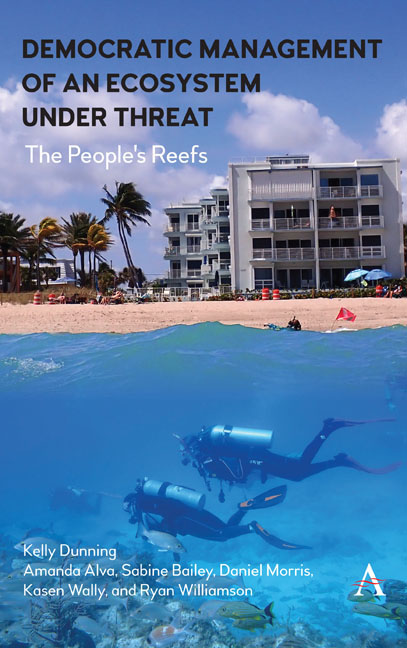Book contents
- Frontmatter
- Contents
- Miscellaneous Frontmatter
- Part 1 The Climate Change Challenge to Coral Reefs That Will Require Conservation Theory And Practice to Evolve
- Part 2 Case Studies
- Part 3 Summary and Conclusions
- Appendix Chapter 5
- Appendix Chapter 6
- Appendix Chapter 7
- Appendix Chapter 8
- Appendix Chapter 9
- Index
Chapter 9 - How Coral Reefs are Placed on The Decision-Making Agenda
Published online by Cambridge University Press: 28 February 2024
- Frontmatter
- Contents
- Miscellaneous Frontmatter
- Part 1 The Climate Change Challenge to Coral Reefs That Will Require Conservation Theory And Practice to Evolve
- Part 2 Case Studies
- Part 3 Summary and Conclusions
- Appendix Chapter 5
- Appendix Chapter 6
- Appendix Chapter 7
- Appendix Chapter 8
- Appendix Chapter 9
- Index
Summary
Data analysis provided by Research Assistant Kampol Pannoi
In 2021, a group of prominent Democratic and Republican lawmakers from the bicameral U.S. legislature, or Congress, came together to call for new policy to defend American coral reefs from environmental change. In the words of Republican Senator Marco Rubio, “I saw the devastated condition of our coral reefs firsthand when touring the Florida Keys National Marine Sanctuary, and I promised a comprehensive response.” His perceptions on stressors to reefs and the need for their proposed policy, the Restoring Resilient Reefs Act, was nearly indistinguishable from his Democratic colleagues. Given how polarized American politics have been for the past decade, it is important to understand why lawmakers come together and agree upon the urgent need to protect coral reefs from stressors? Is there something inherently special to coral reefs that causes elected leaders to put aside typical partisan grudges and work together to ensure laws are passed to guarantee American reefs survive the era of climate change?
This chapter will review the history of coral reef policy in the U.S. Congress, including a focus on policies that had congressional support from both political parties, and a specific case of reauthorizing the fundamental coral reef conservation law in the United States. We argue that understanding why legislators decide to place coral reefs on the policy-making agenda is important for biodiversity conservation, but may also be a source of common ground over more contentious issues, such as the passing of climate change legislation. Our results can help interest groups message the importance of biodiversity and climate policy to lawmakers in a way that appeals to a range of political ideologies.
History of Coral Reef Policy in the U.S. Congress
The federal government of the United States is broken up into three branches of government: the Executive Branch, which is where the president and federal agencies carry out laws; the Legislative Branch, where laws are made in Congress; and the Judicial Branch, where laws are judged based on whether they follow the U.S. constitution. Congress is made up of two chambers or houses, the House of Representatives and the Senate. The House of Representatives is the lower house, which is generally characterized by early career politicians with more frequent elections every two years who represent a district within a U.S. state based on population.
- Type
- Chapter
- Information
- Democratic Management of an Ecosystem Under ThreatThe People's Reefs, pp. 149 - 178Publisher: Anthem PressPrint publication year: 2023

